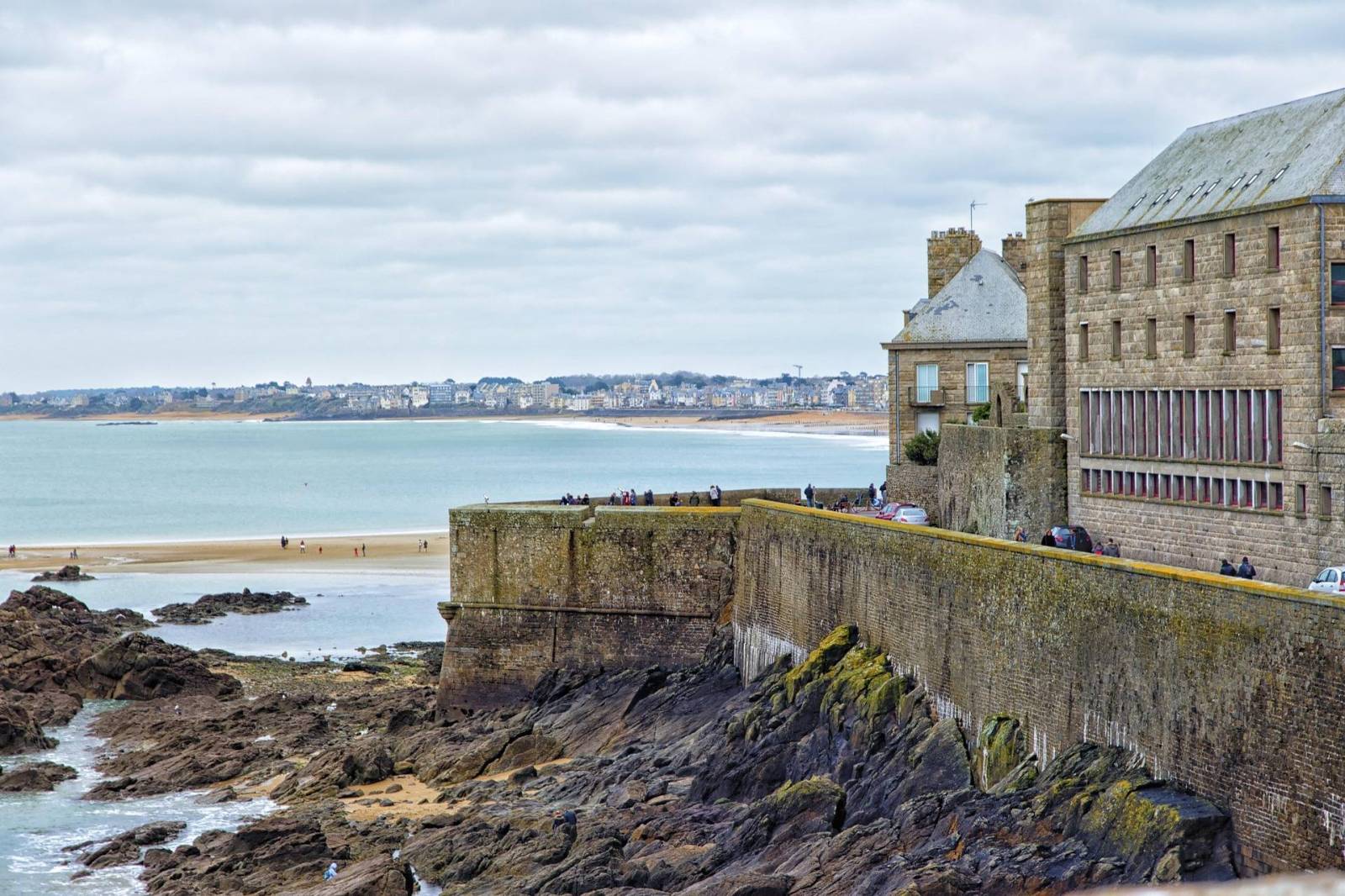La Vélomaritime offers cyclists a captivating journey along the picturesque northern coastline of France. The route is designed to accommodate various cycling preferences, with stages ranging from short, family-friendly rides to longer, more challenging routes for experienced cyclists. It promises an unforgettable journey through some of France's most significant historical landmarks, such as the D-Day landing beaches, variety of terrains including rocky points, sandy dunes, chalk cliffs and UNESCO World Heritage sites, as well as the opportunity to explore charming seaside towns and enjoy local gastronomy. Whether you are looking for a leisurely ride through towns and beaches or an adventurous exploration of rugged coastlines, this route offers a diverse and enriching cycling experience at your own pace.
What is La Vélomaritime?
La Vélomaritime the French section of the larger EuroVelo 4 cycle route, also known as the Central Europe Route. This is one of the most stunning long-distance cycling routes in France, stretching for 1,500 kilometers from Roscoff to the Belgian border near Dunkirk. The route is well equipped, providing high quality accommodations and facilities for cyclists. It is mostly paved and suitable for road or touring bikes, although there are some hilly sections. Train connections and regional transport make it easy to access different segments. La Vélomaritime is designed for both long-distance cyclists and casual riders who want to explore it in stages. Experienced cyclists can ride entire route in several weeks, while families or recreational cyclists can plan shorter, easier sections. Whether you are looking for the physical challenge, cultural discoveries or seaside charm, this route offers a truly unforgettable cycling experience.
How difficult is the Vélomaritime route?
While the Vélomaritime route offers breathtaking views and cultural monuments, the difficulty of the route varies depending on the region and individual fitness levels. The route mainly runs along local roads and greenways, often winding through coastal landscapes. Cyclists can expect numerous ascents and descents, especially in areas like Brittany that are characterized by hilly terrains. The route features a mix of surfaces, while the majority of the route is on paved or compacted surfaces, some sections may present rougher conditions or involve crossing busy roads, requiring increased caution. With proper preparation and pace, you can enjoy a rewarding journey through picturesque landscapes of northern France.
What bike should be suitable for Vélomaritime?
For cycling the Vélomaritime route generally recommended bikes that are well suited for riding on the mix of paved roads, unpaved paths and occasional gravel sections. A touring bike with a sturdy frame, built for comfort and durability over long days, is a great choice if you plan to cycle most or all of the route and carry your own gear. A gravel bike with a strong frame, wide tire clearance and drop handlebars, best for more experienced cyclists who want speed with off-road flexibility. A hybrid bike that can handle both paved roads and light gravel, and provides a comfortablem, upright riding position that provides a good mix of speed and stability, will be a solid choice for recreational cyclists without heavy luggage.
How many stages does the Vélomaritime route include?
The etire 1,500 kilometer route is divided into 53 stages with an average length of approximately 27.83 kilometers each. The stages are designed to offer cyclists manageable distances and variety of experiences along northern coast of France. Taking cyclists through a variety of landscapes, including coastal cliffs, sandy beaches, historical sites and charming small towns, as well as France's famous big cities. For more detailed information on each stage, visit the official La Vélomaritime website.
What are the most notable attractions along the route?
La Vélomaritime cycling route offers a variety of attractions along the northern coast of France, such as:
Pink Granite Coast (Côtes d’Armor)
This region is known for its striking pink rocks and rugged coastline. The area around Ploumanac’h is particularly famous for its unique geological formations and the iconic lighthouse that towers over the sea.
Cape Fréhel
Trip to this preserved wilderness offers cyclists majestic cliffs and the historic Fort la Latte, providing panoramic views of the surrounding seascape.
Saint-Malo
Fortified city with a rich maritime history, cobbled streets and historic ramparts.
Mont-Saint-Michel
Cyclists can approach this UNESCO World Heritage site and admire the abbey set on a rocky islet, surrounded by vast tidal flats.
Le Havre
Rebuilt after being destroyed during World War II, its modernist architecture earned it a place on the UNESCO World Heritage List.
D-Day Landing Beaches
The route passes through the historic World War II landing sites, where cyclists can reflect on significant events and visit memorials dedicated to the soldiers who fought there.
Étretat's Cliffs
The alabaster cliffs of Étretat are legendary, with their natural arches and needle-like formations inspired many artists and writers. The surrounding gardens and pebble beaches add charm to the area.
Baie de Somme
This peaceful bay offers a quiet environment where cyclists can enjoy the tides, sandy islets, and have a chance to spot seals basking in the sun.
Dunes de Flandres
The final section of the route takes cyclists through an expansive dune landscape, characterized by fine sand and a diverse range of flora and fauna.






